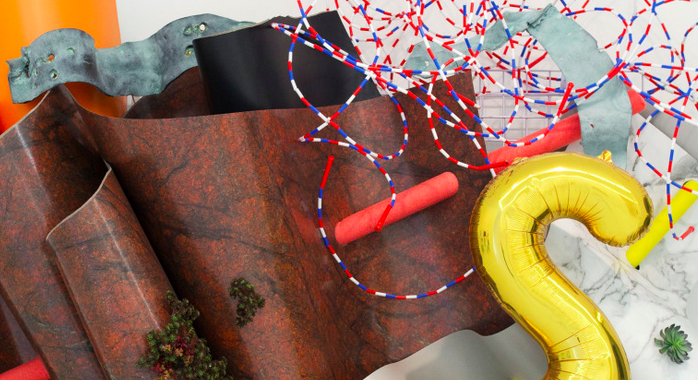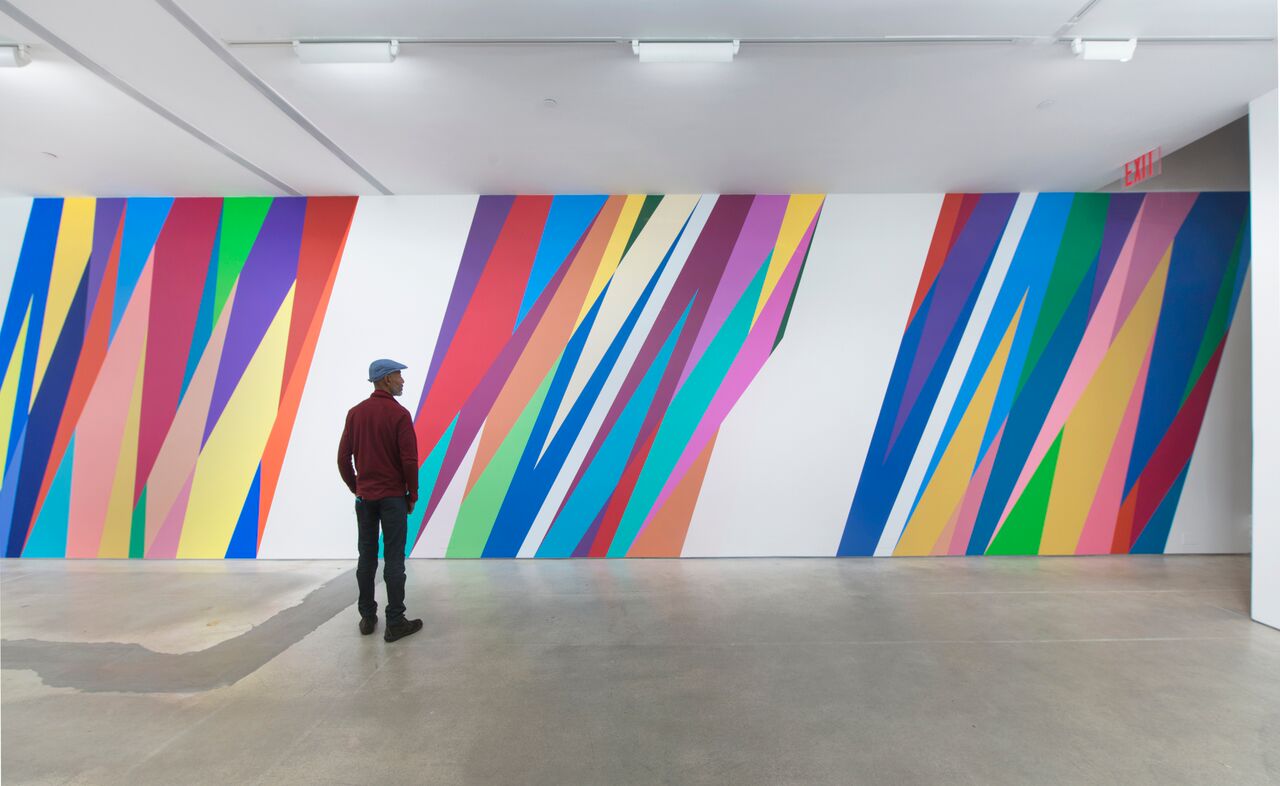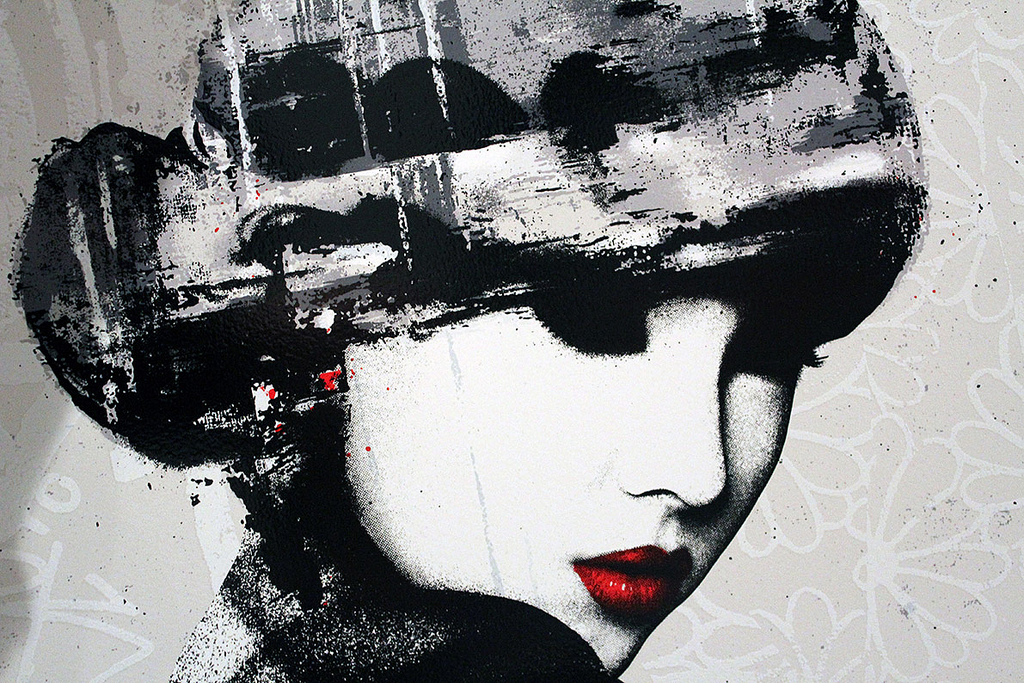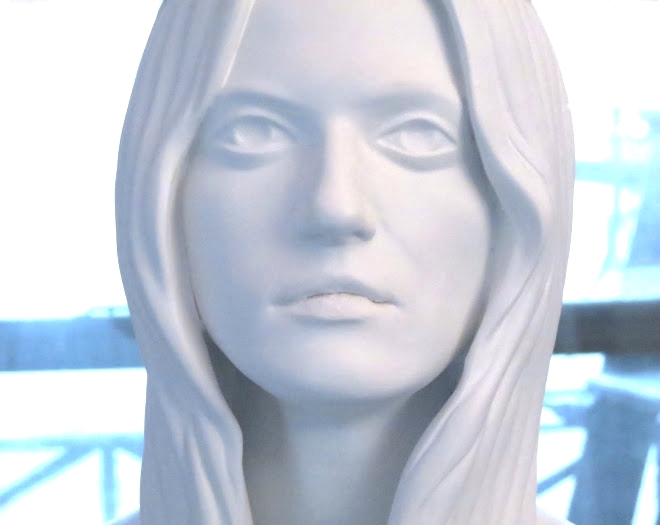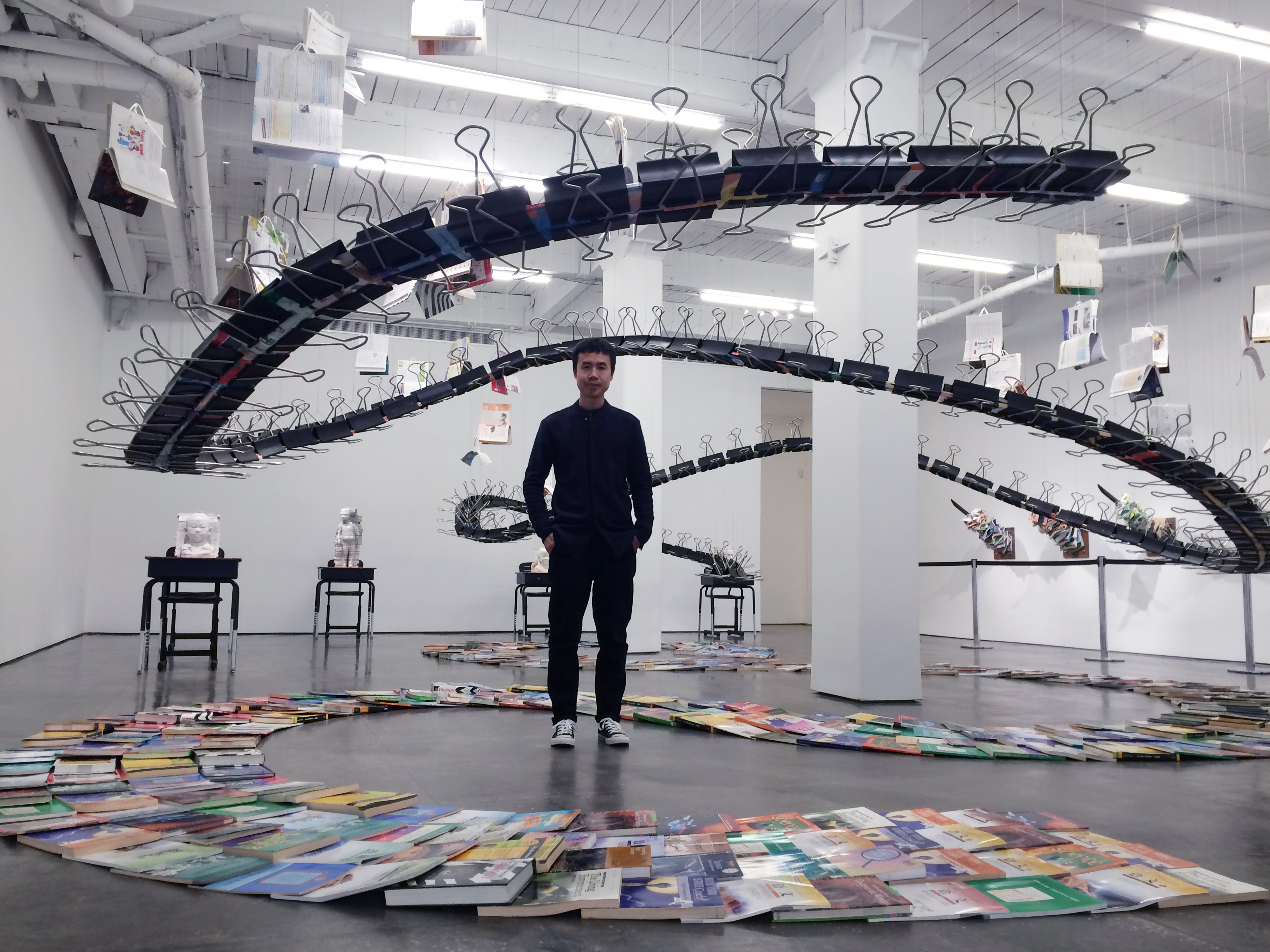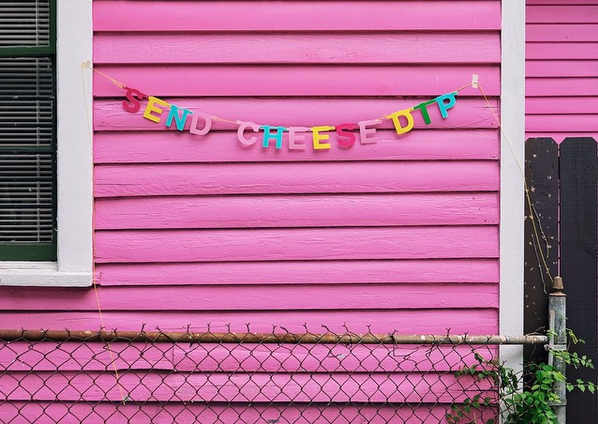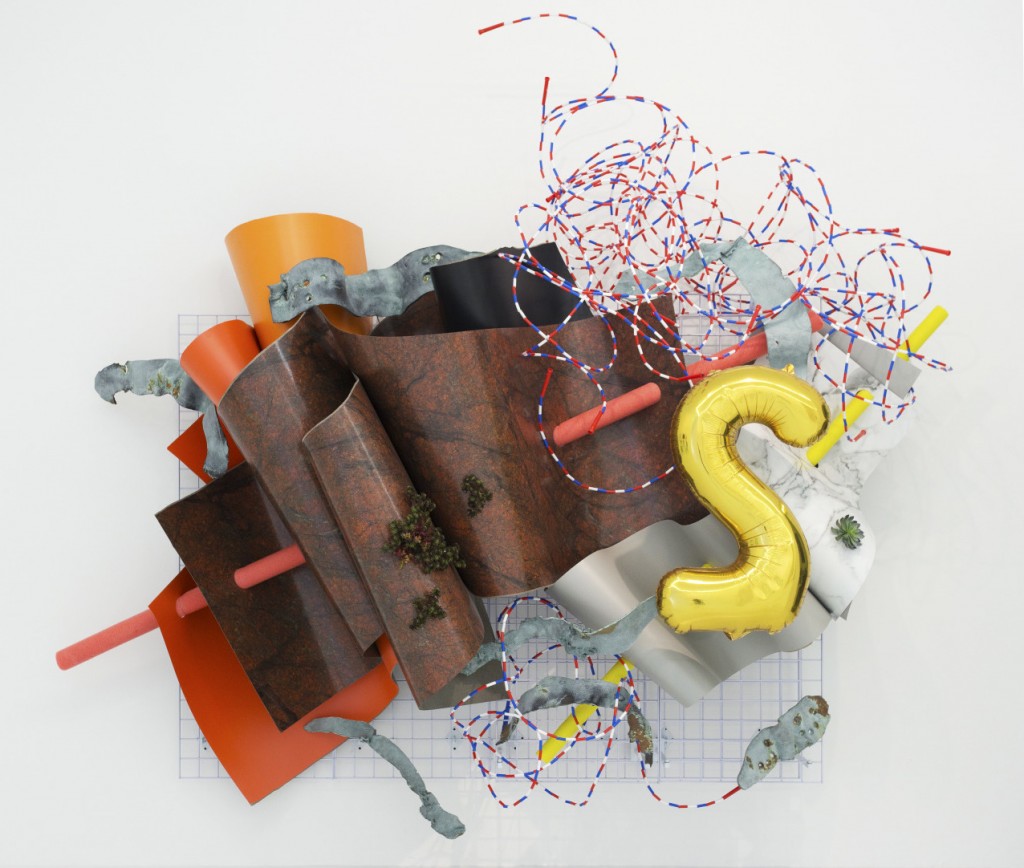
A guy with a pronounced mustache and a girl with dirty hair sit at a bar. Live jazz plays softly in the background, oysters are only a dollar, and the wine is cheaper than a bottle of Fiji water. This scene could be from basically any bar you’ve ever been to in Brooklyn- but the difference here is that the mustached man is multi-media artist Adam Parker Smith and the girl (me), is casually prodding him with questions about his experience as one of New York’s busiest contemporary artists.
Adam’s background is surprisingly idyllic (as far as artists go). He grew up in Nothern California helping out in the bike shop and apple orchard that his parents owned. He went to art school in Santa Cruz but like most kids during their undergraduate years, he learned a lot about everything…except for what he was supposed to be studying. He went on to grad school in Philadelphia, got his academic ass kicked, and somewhere along the way got serious about his career. He began teaching art to everyone from incarcerated youths to kindergarteners, and currently teaches international students at LaGuardia Community College. He also manages to be featured in an impressive number of solo and group shows throughout the country, and that is where we will begin…
J: How did you make the transition into exhibiting your work as a serious artist?
A: I did my second year of grad school in Europe and got a fellowship that year which allowed me to really focus on my work. I had a teacher that pushed me in a really aggressive way and he made me work…actually, he didn’t make me work. He would just come into the studio and be so volatile and articulate with reasons why I was an inferior sort of artist that it pushed me.
So I went from working 30 hours to 40, 50, eventually 80 hours a week in the studio and I feel like I just got in the habit of making a lot of artwork. I guess I just haven’t stopped doing that.
J: So then you were able to leverage that experience in New York?
A: Well I was in Philly for 3 or 4 years after that and they have a sort of insular art scene. Every once in a while they will have someone like Alex De Corta, but for the most part what goes on in Philly stays in Philly. It was a good preview to New York as far as how everything worked. I got to make mistakes on a smaller scale, which is good because I’ve made some stupid mistakes.
J: Let’s hear more about those mistakes?
A: I made a lot of bad artwork. I mean, I continue to make bad work…all the time…but the lesson is that now I know not show it to anybody.
J: When you’re in the process of making something, are you aware you’re making shit? How do you arrive at the conclusion that it’s not good?
A: Well, for some things there is just empirical evidence that it is a failure. However, I think failure is a positive sign. It’s an indicator of someone that is taking risks.
Somebody that has a really steady career and doesn’t fuck up in the studio sometimes is someone that I probably wouldn’t be very excited about what they’re going to do next.
J: Where do the ideas for your work generally come from?
A: A lot of times there will be a catalytic ingredient, whether it’s a material or an idea that I think I’ve come up with on my own. I’d be naive to think ideas come from nowhere, I’m sure I steal a lot of ideas.
J: Your large works for example, where did the idea to appropriate common materials come from?
A: That work has probably evolved more than any of the work I’ve ever done and it started with a few components. It was like that children’s book, where the main character wants soup but all he has is a pot and a button. He keeps adding ingredients and adding ingredients until he has a delicious stew.
Such a random story, but that’s basically how this series started. I had this one component, which were these bronze masks that I had made and thought, “what are these going to hang on?” And I kept adding components to make it better until the structures were completed.
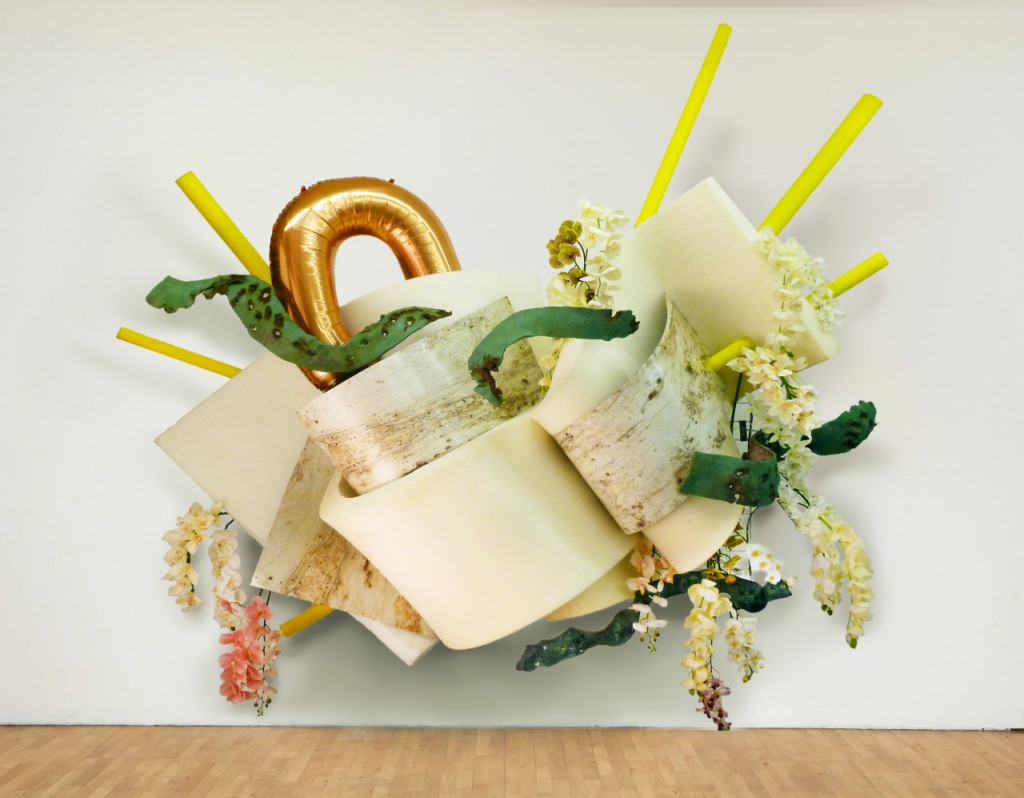
J: You’ve created quite a few of these large works…
Yeah, with this new series I wanted something that would be able to evolve. Painters are notorious for having practices that evolve, where they push their work and I wasn’t able to do that before because it was clear when my projects were done. There’s something more relaxing about this series because I don’t have to completely reinvent my practice every time I finish. That said, the challenge there is making sure your work is still interesting.
J: These pieces are pretty big, do you have a lot of people helping you?
A: Sometimes I do. Carolyn and I have a group of people that come and go, friends that help out. Sometimes I have slow periods of time when I need to be alone and making mistakes. But it’s amazing the amount of work you get done when you have a couple extra people around the studio.
J: Artistic communities play a large role in so many artists’ success. How did you go about building yours?
A: Going to openings and being around the city, but really most people I have met are from studio programs. I’ve done quite a few since I’ve been in New York and I would always become friends with my studio mates. Other than the work space, that is by far the largest benefit of artist programs.
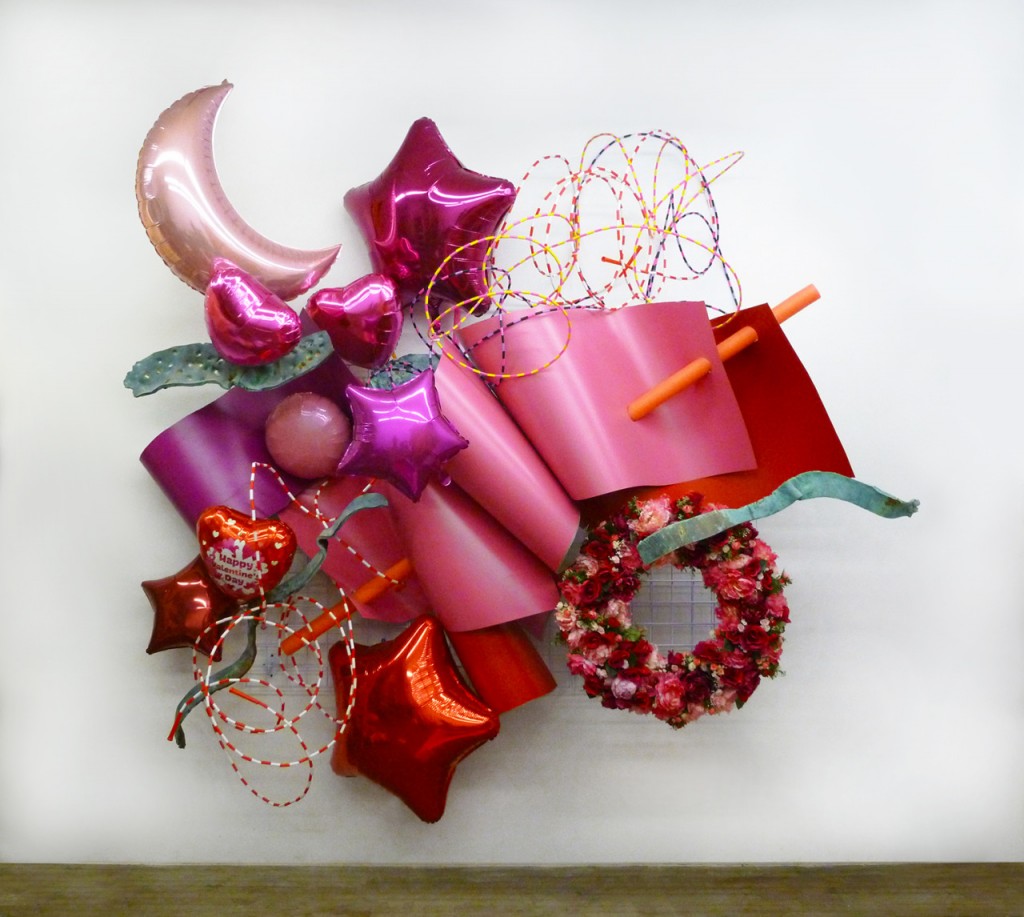
J: How do you get into these programs, just apply?
A: Yeah, lots and lots of applying. Always apply. I was lucky enough to have a residency at the Artist Alliance when I first got to New York. Then I did a bunch…chashama, Abrons, Jentel, Beemis. That’s how I met everybody…and you meet their friends too.
J: How do you get new projects funded?
A: Sometimes I sit on an idea until someone comes along to help out, but typically for me it’s, how can I do this? Often times I use unconventional materials and it’s because of financial constraints and that really pushes my work. There is also something about taking materials that are accessible to everybody and making something great- it’s sort of a Top Chef situation where everyone has the same ingredients. The winner is who can get the most creative with the materials they are given.
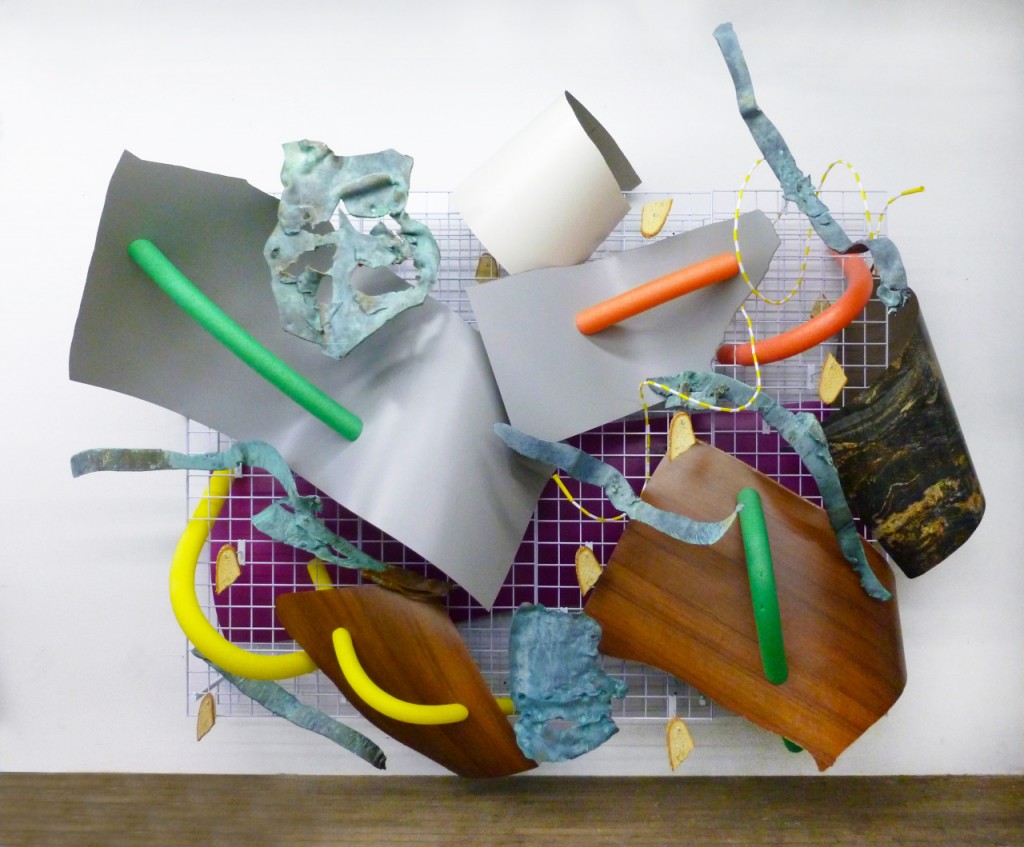
Adam was recently named as one of the artist chosen for the New York Foundation for the Arts (NYFA) Artists’ Fellowship Program. He currently has work on view at the Derek Eller Gallery in New York and within the last few months has been part of shows at Davidson Contemporary, Louis B. James, Invisible Exports, and The Hole (just to name a few).
Click here to see his full body of work and be sure to follow him on social media to keep track of his upcoming shows.


